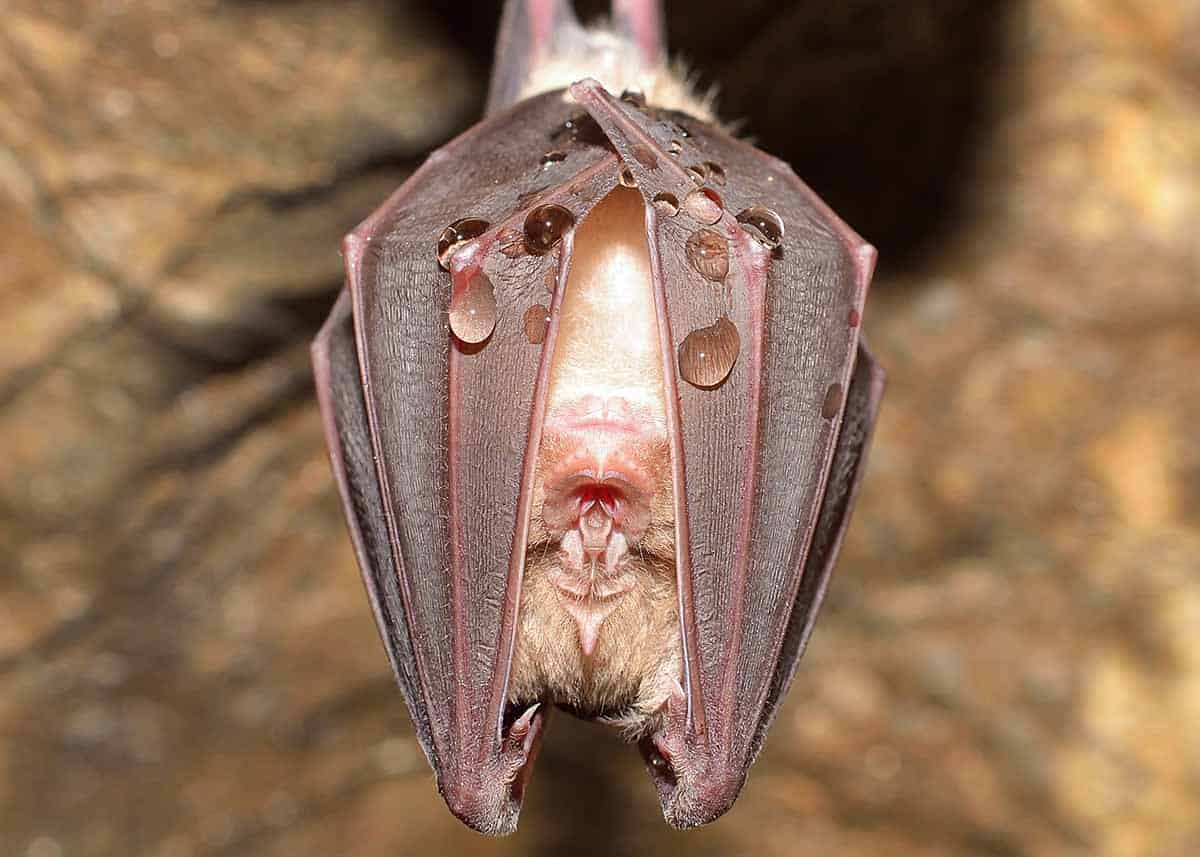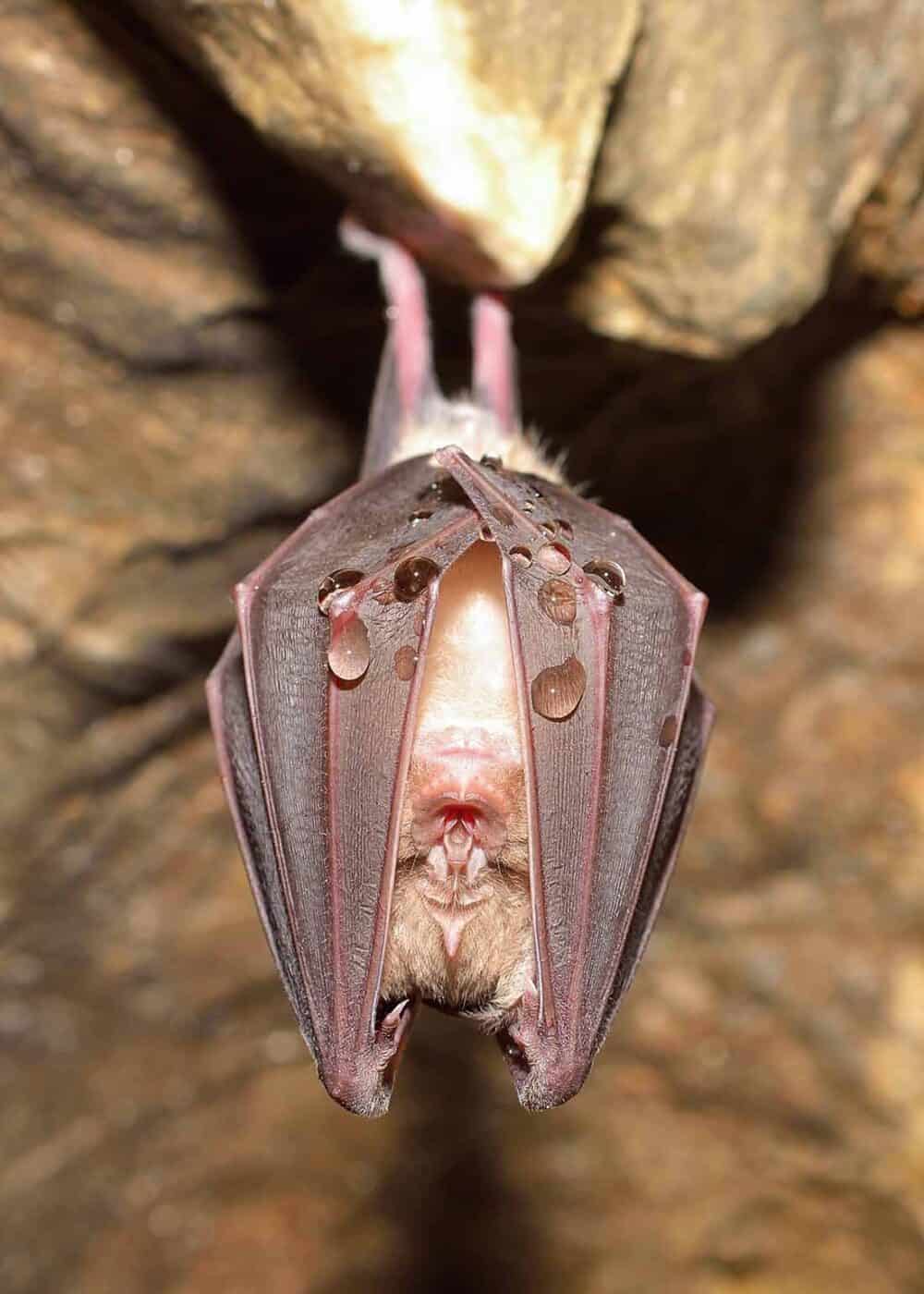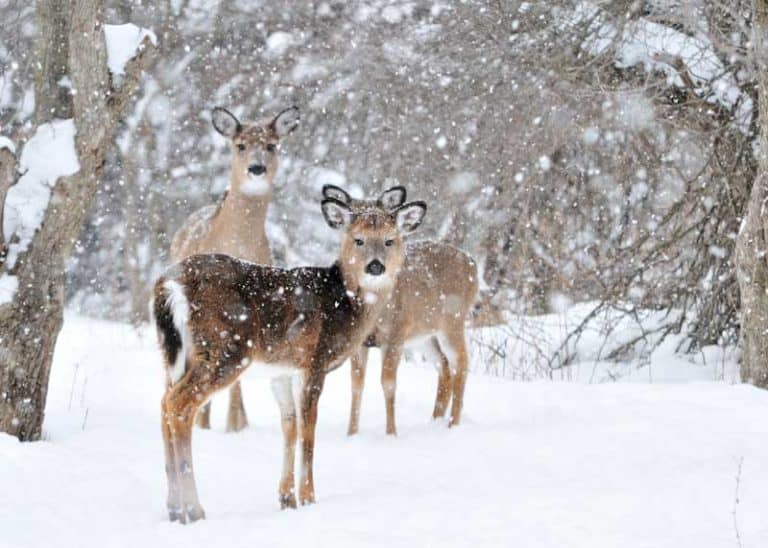Do Bats Hibernate in the Winter? 3 Ways Bats Handle Cold Temperatures
Bats have high energy requirements. And when winter removes their insect food sources, they must make a change. Many birds migrate to warmer climates when the cold sets in. But bats are mammals, and some mammals, like bears, hibernate in the winter. Do bats hibernate in the winter?
When it goes cold, some bats hibernate and others migrate to warmer climates. Some bat species do both; they migrate and hibernate. In warmer climates, like Florida, Texas, and parts of California, bats will stay active year-round.

Read on to learn more about bat behavior in the winter.
Do Bats Hibernate?
During winter, many bat species will hibernate. But some will migrate to warmer climates in search of food.
Hibernation allows the bat to survive extremely cold temperatures. And to go long periods without a food source.
A bat’s heart rate drops from 200-300 beats per minute to 10 beats per minute, and it may go minutes without taking a breath.
National Park Service
Because of this physical change, energy requirements can be reduced by almost 98%.
Bats use large amounts of energy every day. Flying is exhausting, and when food sources disappear in the winter, bats must find a solution to less food.
Bats can continue to stay active in more temperate locations due to an ample food supply. In colder areas, bats have to take drastic measures.
During hibernation, their metabolic rate slows dramatically, and they do not eat or drink. Hibernation is an adaptation to help them survive the cold winter months when food and water are scarce.
Bats undergo a process called torpor. Cold temperatures and low food supplies trigger this state. Torpor is not tied to the season but is triggered by cold temperatures and preserving energy stores. .
Bats can stay in torpor for anywhere from several minutes to weeks. The time bats remain in the state depends on how cold it gets. However, if there is a warm day, bats can rise from their torpor and go about their lives.
Torpor has many of the same characteristics as hibernation, including low heart rate, body temperature, and metabolic rate. Still, due to the temperature dependence, it is considered a different type of survival mechanism.
See Ussurian tube-nosed bats hibernating in snow dens.
Where Do Bats Like To Undergo Torpor?
When temperatures drop, bats that undergo torpor will try to find a safe place to hide out. Usually, this means caves or deep crevices. They will do their best to find a place where no cold air can get in.
The places where bats hibernate are known as hibernacula.
Some bats live in roofs or attics due to the warmth a house provides and a lack of access to traditional hiding places.
Many bats will do this in groups to keep each other warm and share resources. However, some populations do undergo torpor alone.
Here’s how torpor compares to hibernation and sleep.

What Other Winter Survival Tactics Do Bats Have?
Not all bats undergo torpor or hibernation. There are several other survival mechanisms that bats use to survive the winter.
Migration
Migration is another method that bats use to escape the winter. Migration is when bats travel to a warmer climate for the winter. Migration can consist of short flights within their location or long-distance.
One of the most well-known migratory bat species is the Mexican long-tongued bat. This species moves from southern US to southern Mexico and northern Central America in the winter to escape the cold weather and find a food supply.
Continue Life as Usual
If a bat lives in a warmer location, there is a good chance it will avoid torpor and migration and continue living its everyday life. This option is only available for bats that can access plenty of food in the winter.
This includes some bat species in Texas and Florida.
More About Bats
Bats are small mammals with wings, usually weighing less than half a pound each. They can be found worldwide in nearly every habitat, and over 1,000 species of bats exist.
Bats are one of nature’s most efficient predators. Bats also have excellent hearing and echolocation, which helps them navigate in the dark and hunt prey. However, they have notoriously bad eyesight.
Most bats are nocturnal, meaning they do most of their nighttime activities. They hunt, find mates, and avoid predators at night rather than during the day. During the day, they roost in caves, trees, or other dark, sheltered areas.

Here’s more about how other animals handle winter. Learn about squirrels, ticks, and deer.
Keeping Warm
Bats have a variety of methods to survive the winter. Whether they migrate, hibernate, or enter torpor, their unique adaptations allow them to do so successfully. Whether you are a fan of these extraordinary creatures, their ability to survive the cold is something we should all admire.






